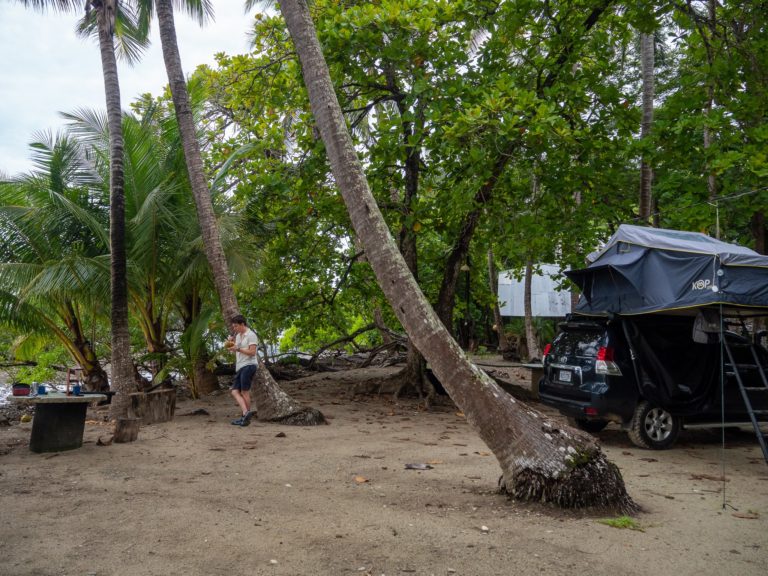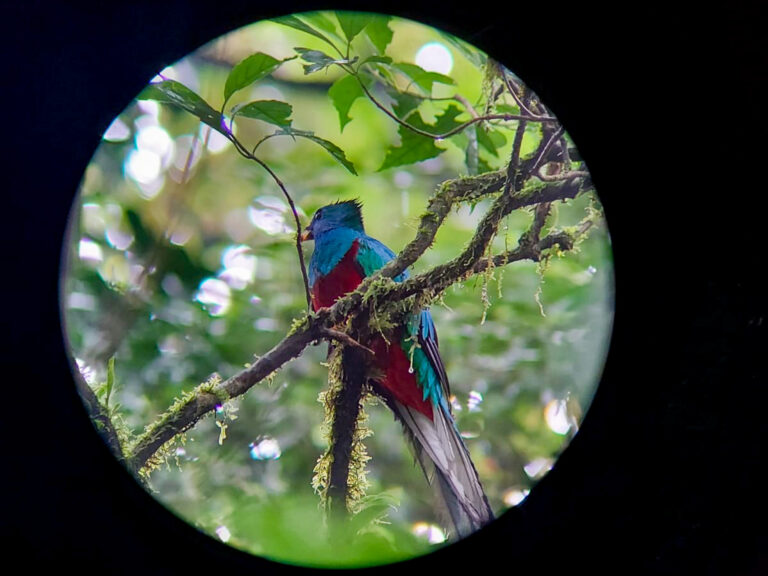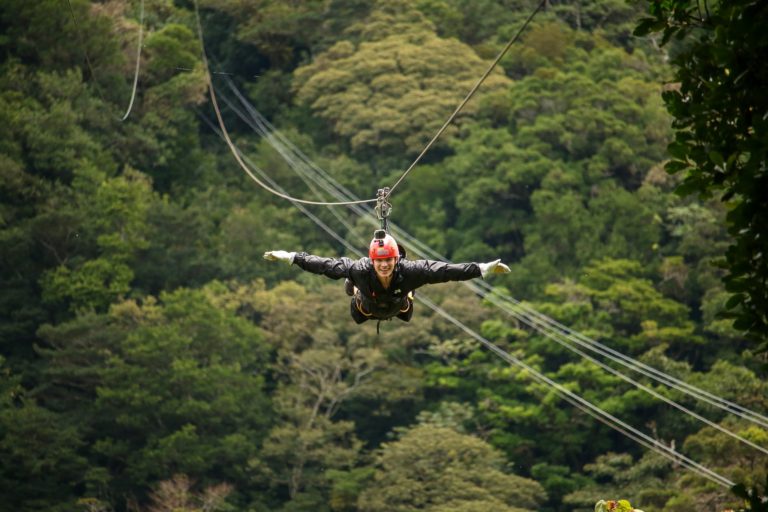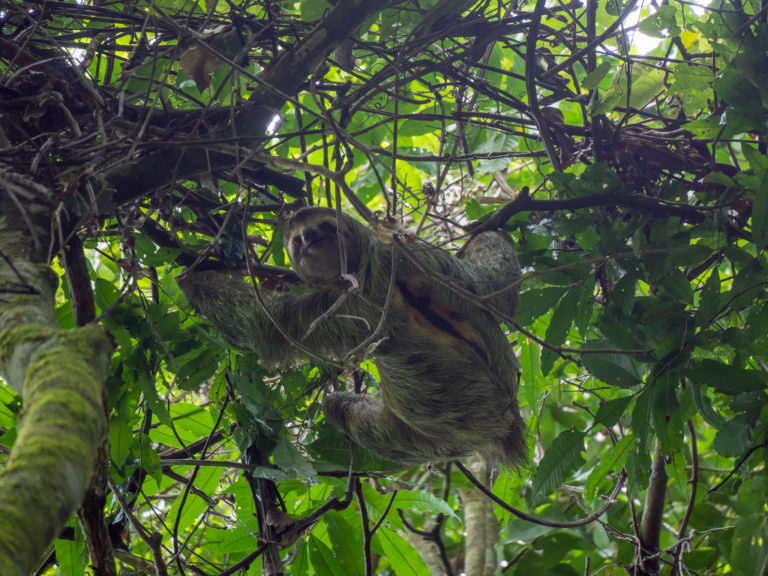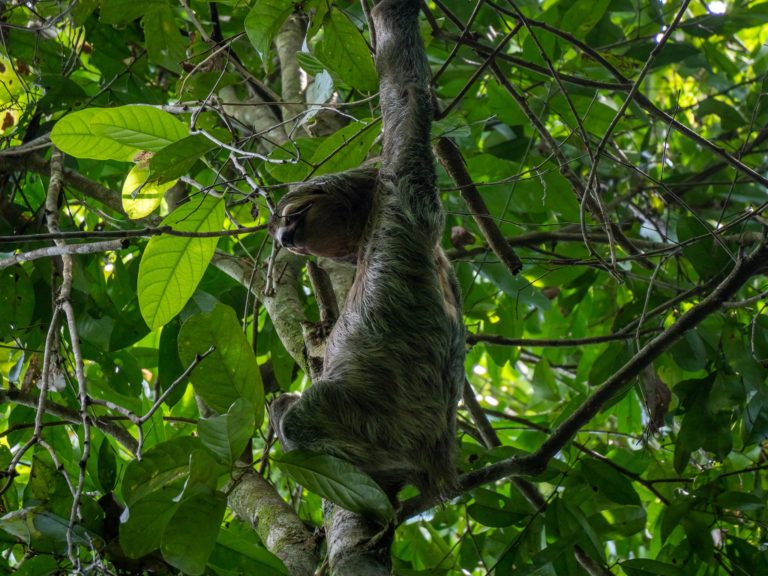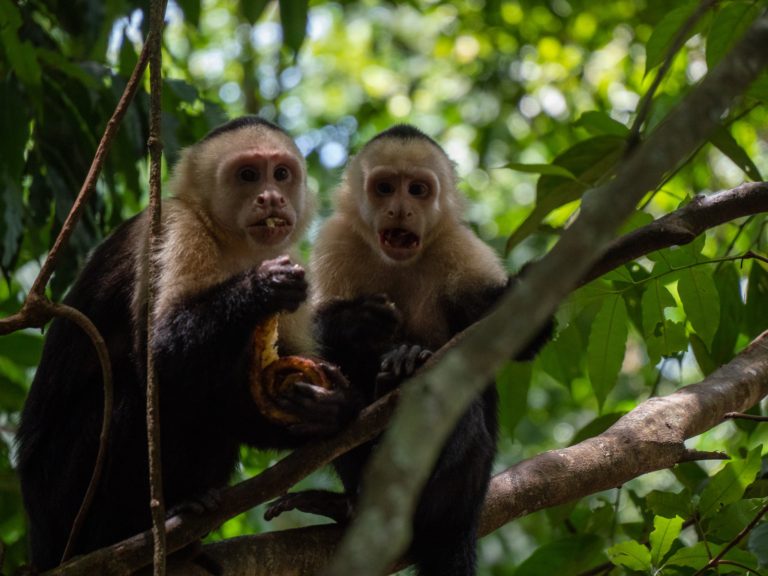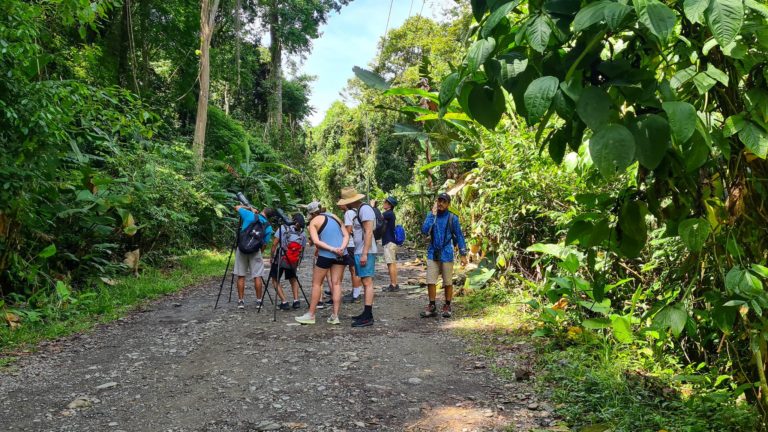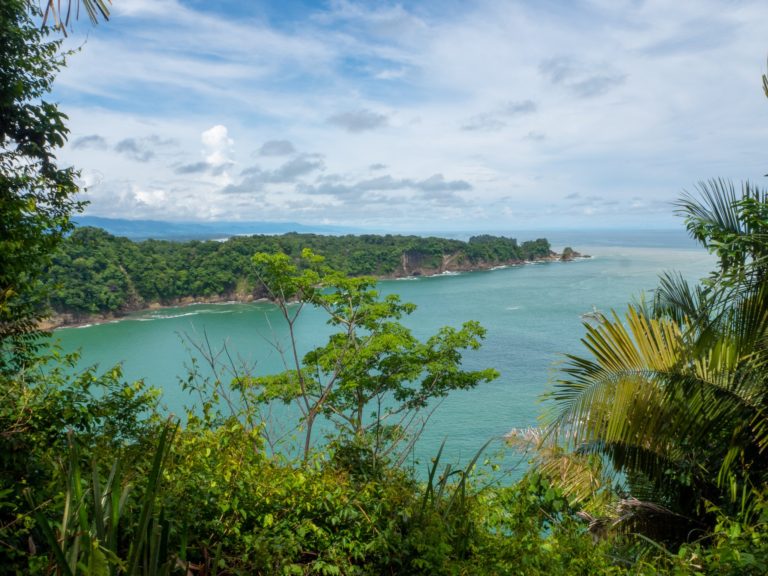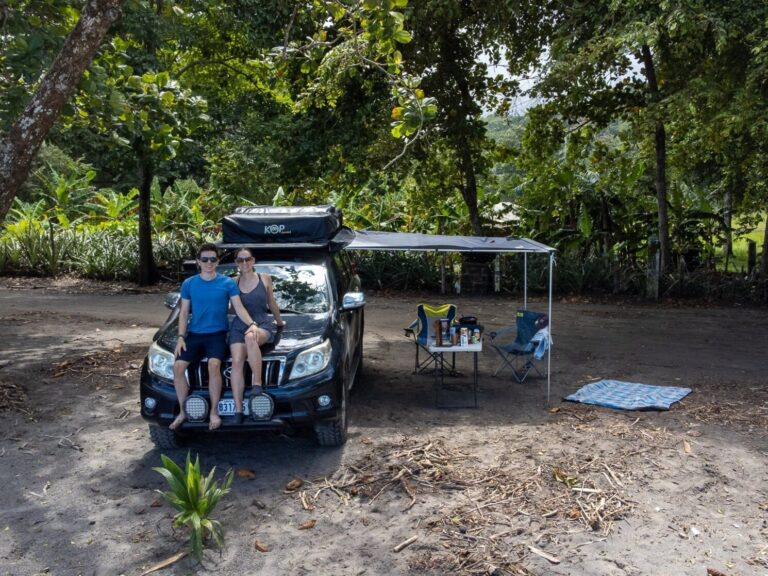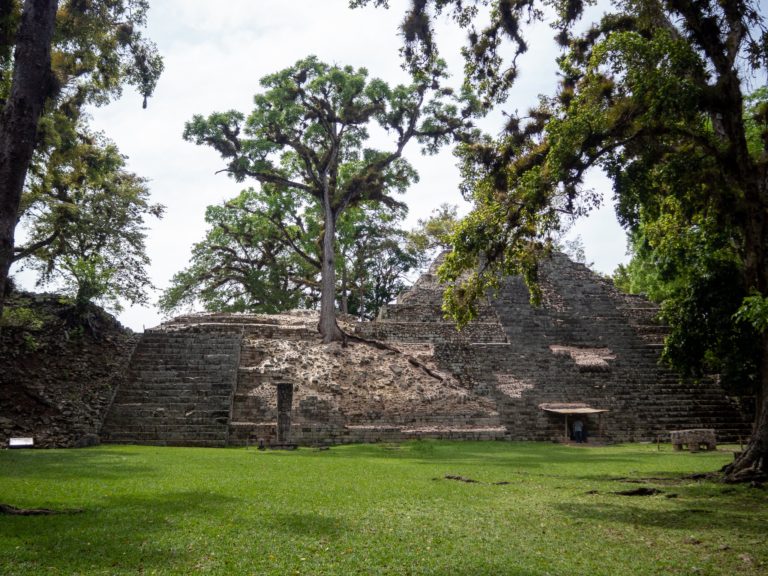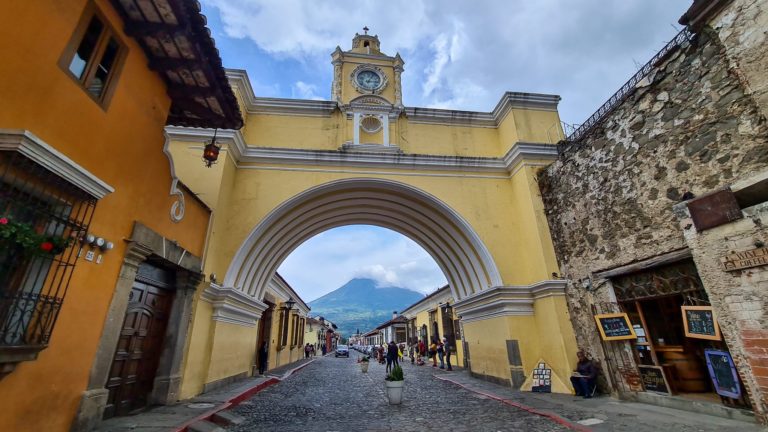Everything you need to know about visiting Masaya Volcano National Park
A complete guide to the visiting Masaya Volcano National Park on your own or with a tour.
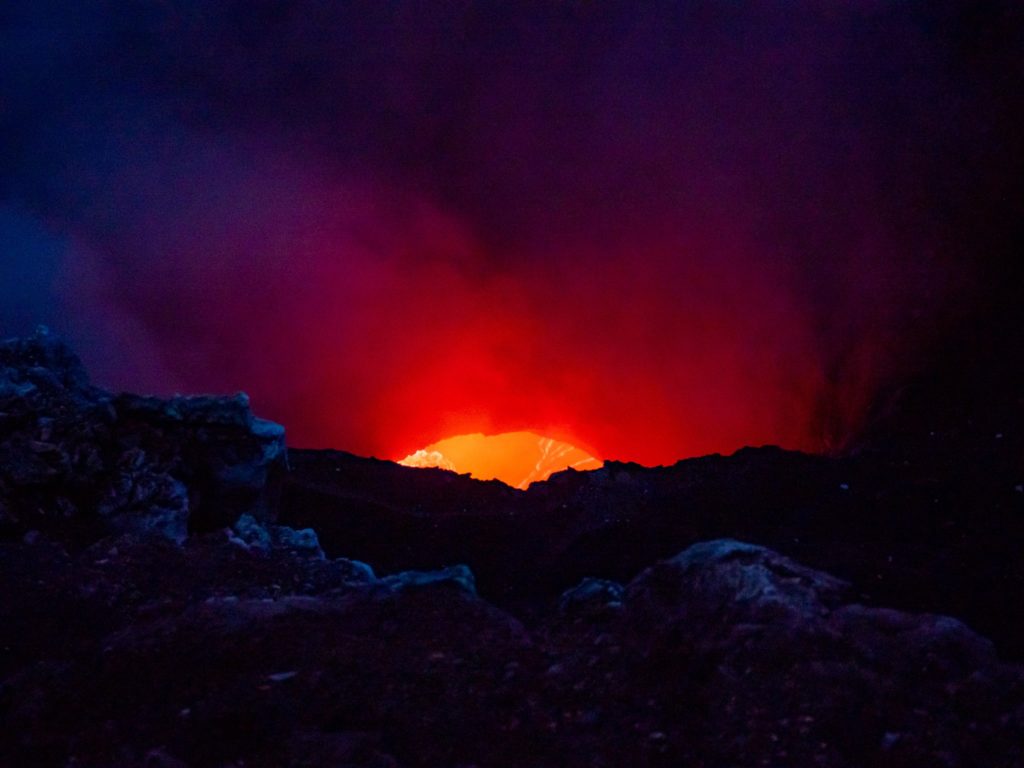
This post may contain affiliate links, which means we might earn a small commission on anything purchased through these links at no extra cost to you. Learn more on our disclaimer page.
Central America is full of beautiful places, but there’s one area in Nicaragua that you must visit: Masaya Volcano National Park. Situated between the cities of Managua (the capital of Nicaragua) and Granada, Masaya Volcano National Park is home to 2 volcanoes, 5 craters, hiking trails, a museum and La Boca del Infierno – the Santiago Crater lava lake. There are 78 protected areas of Nicaragua and Masaya is Nicaragua’s first and largest national park. Masaya Volcano (Volcán Masaya in Spanish) is a caldera (volcanic crater) located within the area of Masaya and is thought to be around 9000 years old. Masaya Volcano is one of the most active volcanoes in Nicaragua, having erupted at least 19 times, the most recent of which was in 2008.
Time needed: 3-5 days.
When to go: April-May or September-January to avoid peak season. Prices will be lower and the weather should still be pleasant.
Transport: Make your own way there by public bus, take a taxi, or join a Masaya Volcano Tour.
Weather: Tropical with little seasonal variation in temperature, which ranges between 21-27˚C (70-80˚F). Wet season runs between May to October with a Canícula (dry period) regularly during late July and early August. Dry season runs from November to April.
Languages: Spanish and other indigenous languages.
Currency: Nicaraguan Córdoba
Masaya Volcano National Park 2025 Update
Masaya Volcano National Park has reopened following a closure in March 2024. This was due to a landslide that covered the lava lake with debris, blocking the release of volcanic gases and increasing the potential for volcanic explosions.
In 2025, the park is open as usual. However, it’s still not possible to see the Masaya Volcano lava lake. You can still enjoy hiking the trails, seeing the volcanic landscape, and visiting the museum within the national park. It’s unclear when it will be possible to see the lava in Santiago Crater again.
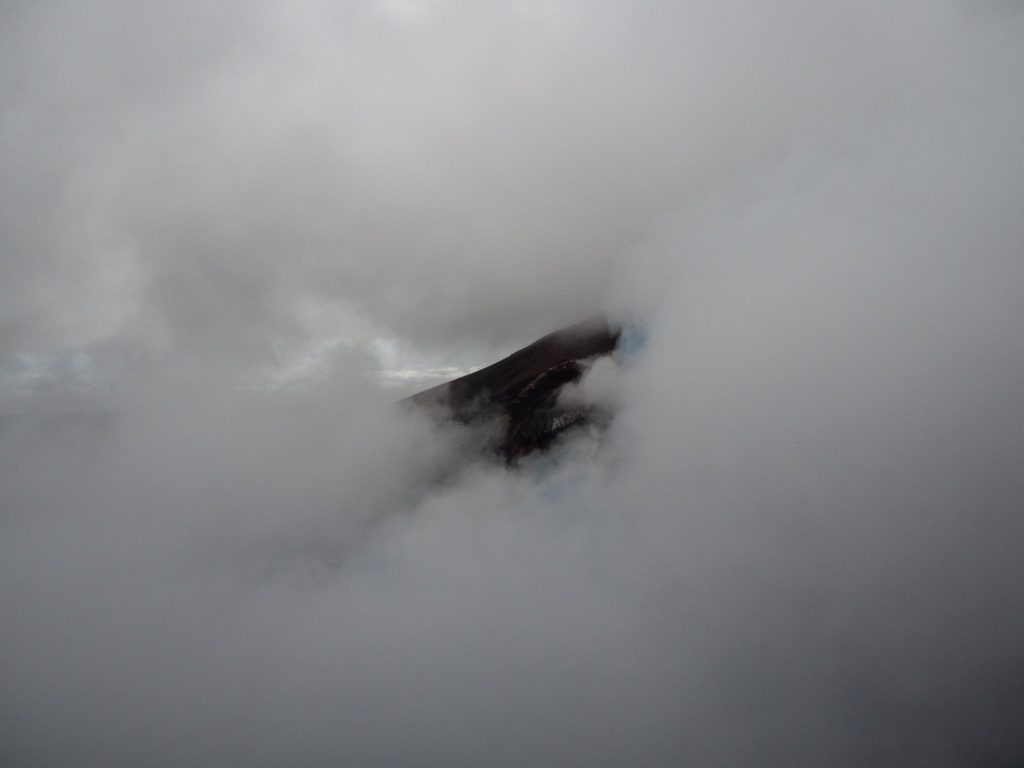
Santiago Crater
Of all the volcanoes in Nicaragua, Masaya Volcano is the most famous as it is one of the only places in the world where you can actually see a lava lake. Other locations include Antarctica, Ethiopia, Hawai’i, the South Sandwich Islands, the Democratic Republic of the Congo and Vanuatu. It’s for this reason that tourists travel from all over the world to witness one of the best things to do in Nicaragua: the lava lake known as the Santiago Crater. The crater continually emits large amounts of sulfur dioxide gas, which wafts over the park and often completely obscures the volcanoes. As you can see from the photo below, the gas looks like huge clouds. Luckily it’s less dense than a cloud so drifts a lot, especially when there is more wind. After sunset, it’s possible to look down into the crater and see lava bubble – a spectacle which Spanish colonisers came to call ‘The Mouth of Hell’.
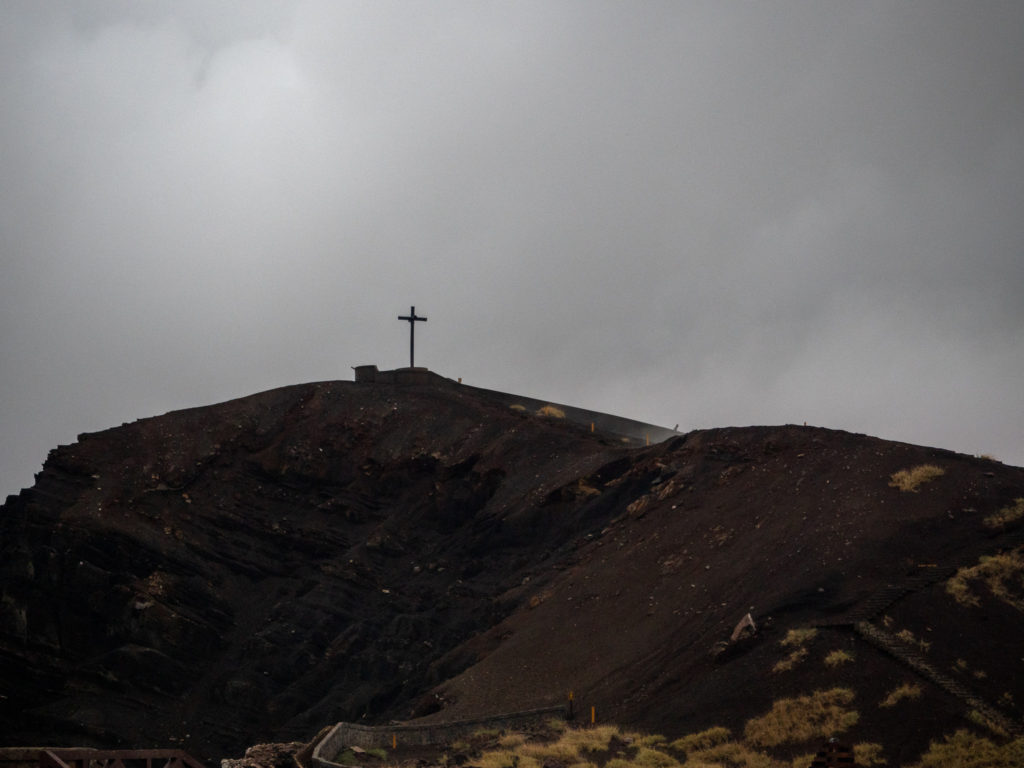
Masaya Volcano National Park General Information
Due to the constant activity of the Santiago Crater – lava bubbling, boiling and spitting – Masaya volcano technically erupts all the time. But larger eruptions are rare. As you enter the park you’re surrounded by expansive lava fields. These fields of solid lava are from an eruption in 1772, which was the last eruption to form lava fields in the park. As you drive further into the park, the road leads you through the lava fields from 1670. These fields were made when the lava lake in Nindiri Crater (at that time recorded to be almost 1km wide) overflowed and scorched the surrounding area.
After passing the ticket office (more information on prices below), you’ll arrive at the museum. Take some time to explore the exhibitions, which include informative displays. Here you can learn more about Masaya, as well as the Ring of Fire, a global chain of volcanoes, part of which forms the backbone of Central America.
Your journey by vehicle ends at the car park, which offers impressive views of Lake Masaya. From, here you can join several of the park’s hikes and explore further afield. The car park is also the best spot to watch the lava lake display in the whole national park – more details on that below.
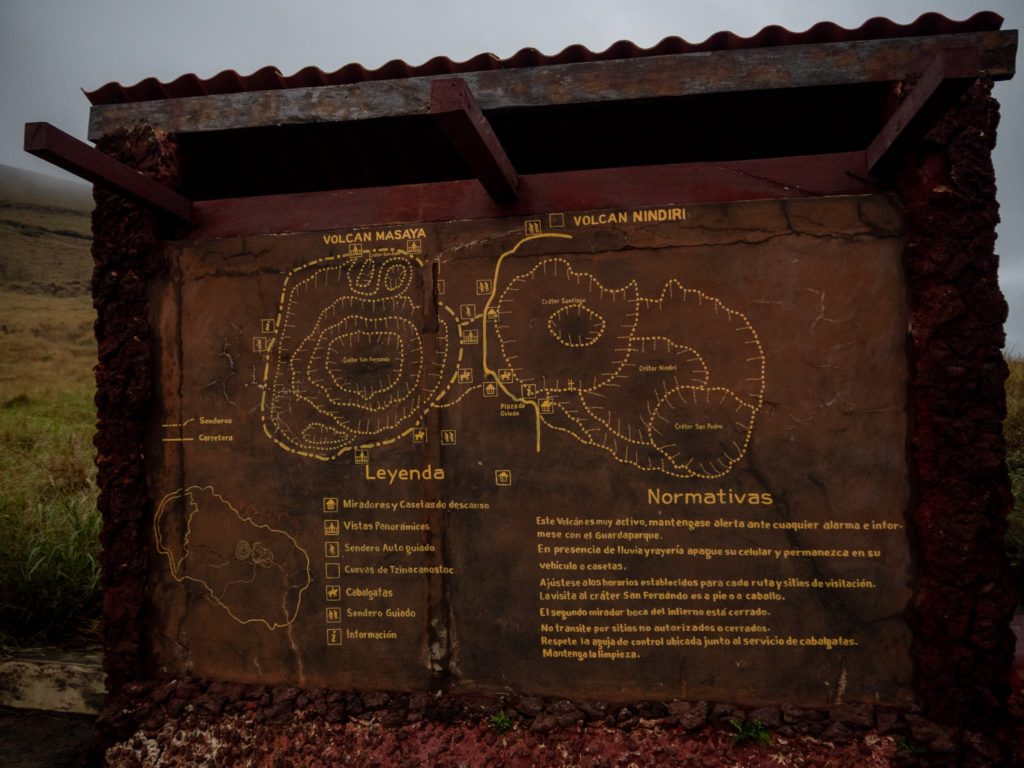
Hiking in Masaya Volcano National Park
The best way to see the National Park is to hike the numerous trails, most of which leave from the car park and lead to miradors (viewpoints).
- Follow the 280 concrete steps to Mirador Cruz de Bobadilla. This high vantage point is marked by a large cross and offers great views of Masaya Volcano and the Santiago Crater, as well as the surrounding volcanoes and lava fields.
- Take the short but steep Masaya Trail to Mirador San Fernando, which gives you a superb vantage point to see the San Fernando Crater.
- From the San Fernando Viewpoint, you’re halfway to the highest point of Masaya Volcano National Park. Follow the path to an elevation of 635m (2083 ft), where you’ll be able to see Lake Managua and Momotombo Volcano.
There are some more challenging hikes, but these require a guide from the national park, a minimum of five people and must be organised and booked with the national park staff at least one day in advance. These include the Coyote and Comalito hiking trails, both of which are 4km long and take around 2 hours each.
The San Juan–San Fernando Circuit was opened in 2021 and explores part of the Santiago, San Fernando and Nindiri craters. At 3.5km, it takes around 1–2 hours to complete.
Due to unpredictable volcanic activity, trails are often closed indefinitely with no notice. The lava tunnels and Tznaconostoc Bat’s Cave Trail, as well as El Comalito (a small, steam-emitting volcanic cone), are intermittently closed.
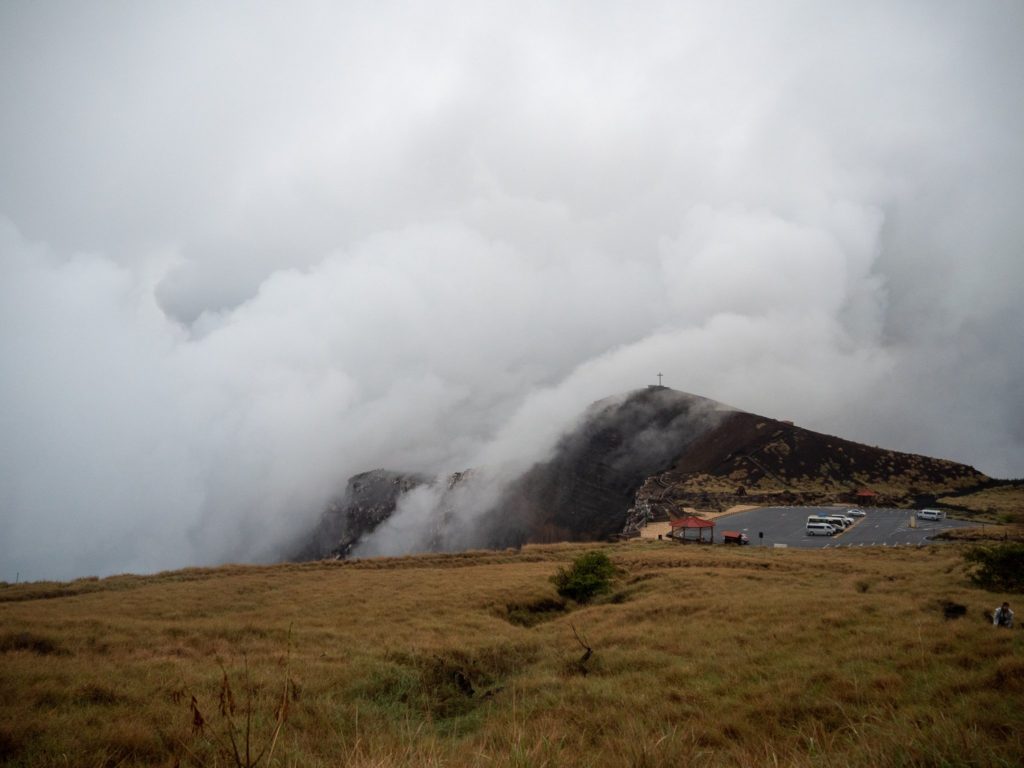
Where to see lava in Masaya Volcano National Park
There are two wooden platforms from which you can look down into the crater. They can be accessed by steps by the car park and give a good vantage point of the crater. But the best view is actually from another spot. There is a live webcam located in the car park between the two platforms and this is in fact the best place to see the lava. Situate yourself underneath it for the best seat in the house. Apparently, you’re only allowed up to 30 minutes at the Santiago Crater viewing area, to keep crowds from forming. We didn’t see this be enforced but it’s a rule tours adhere to.
It’s also worth noting that the gases which pour from the volcano can obscure the lava lake at times, so your view may depend on the weather and luck. When the lava bubbles, it technically counts as a small eruption.
Pro tip: The lava bubbles, spits and hisses and if you listen carefully you can actually hear it! It sounds like lapping ocean waves in the distance.
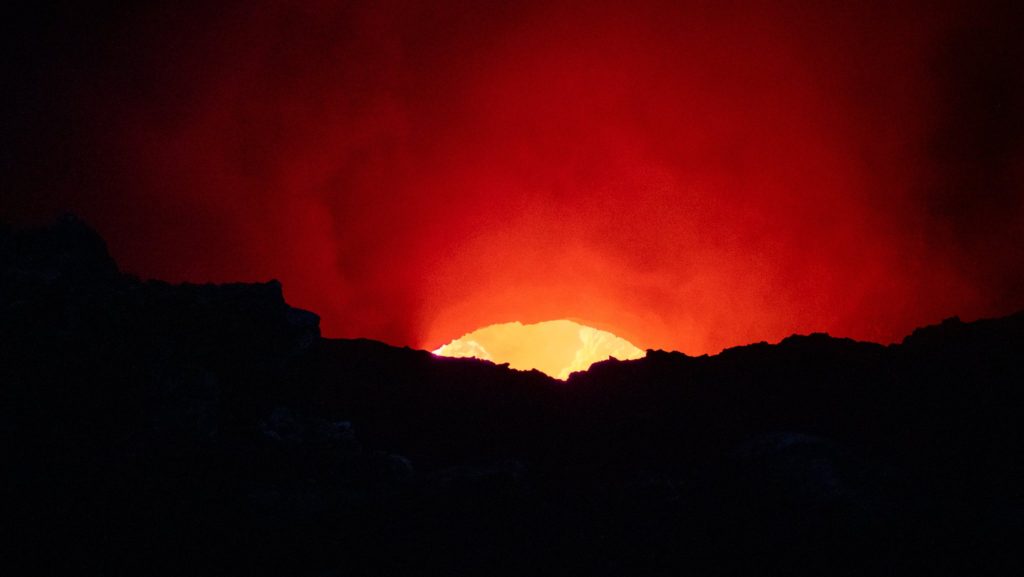
How to get to Masaya Volcanoes National Park
There are several ways to get to Masaya and all of them are affordable.
If you’re on a tight budget, you can take a bus to the park entrance, which costs about $1. From Granada or Masaya, take a bus heading for Managua. The journey from Granada takes around 1 hour and from Masaya, 20–30 minutes. The bus will drop you off at the park entrance where you can buy your ticket. From here you’ll need transport to the car park as you’re not allowed to walk along the road anymore. Locals congregate at the entrance for this purpose and will drive you to the volcano in their car for a little fee (~$5 pp).
Alternatively, you could negotiate a taxi journey from town. Be sure to ask for a return fare and for them to either wait for you or return to pick you up. Taking a taxi costs around $20 for a return. We wouldn’t recommend this option as it’s about the same price as a tour and a lot more faff.
Taking a tour is also a very affordable option. Tours typically cost $20-25 and will include a professional guide and your transportation both ways. We’d recommend this option as it’s the best way to see the National Park and learn about what you’re seeing too.
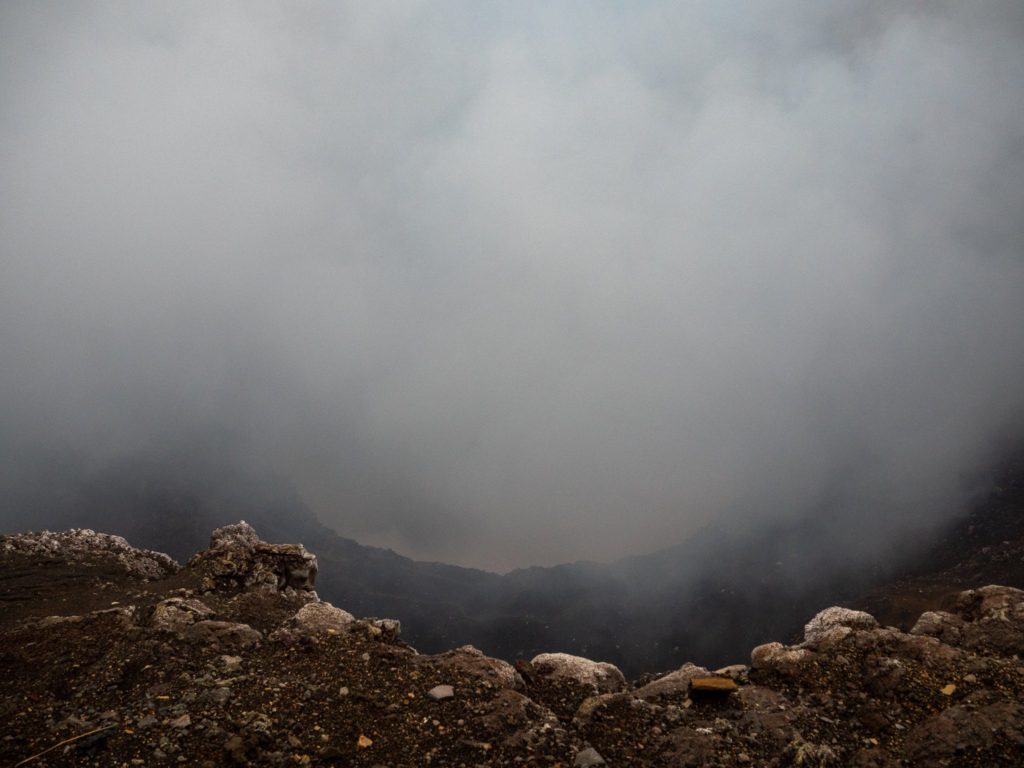
Interactive Masaya Volcano National Park Map
Masaya Volcano National Park opening times and prices
The park is open in two slots: 09:00-16:45 and again from 17:00-20:00. Sunset is usually between 18:00-19:00. If you want to see the lava you should arrive at the beginning of the evening slot. This gives you some time to do a few small hiking trails, see the sunset over the lava fields and then get into position for the lava show.
The Masaya Volcano entrance fee is different for the day and night slots. The daytime slot is C150 (~$4). The night-time slot is $10 for foreign visitors and $5 for locals.
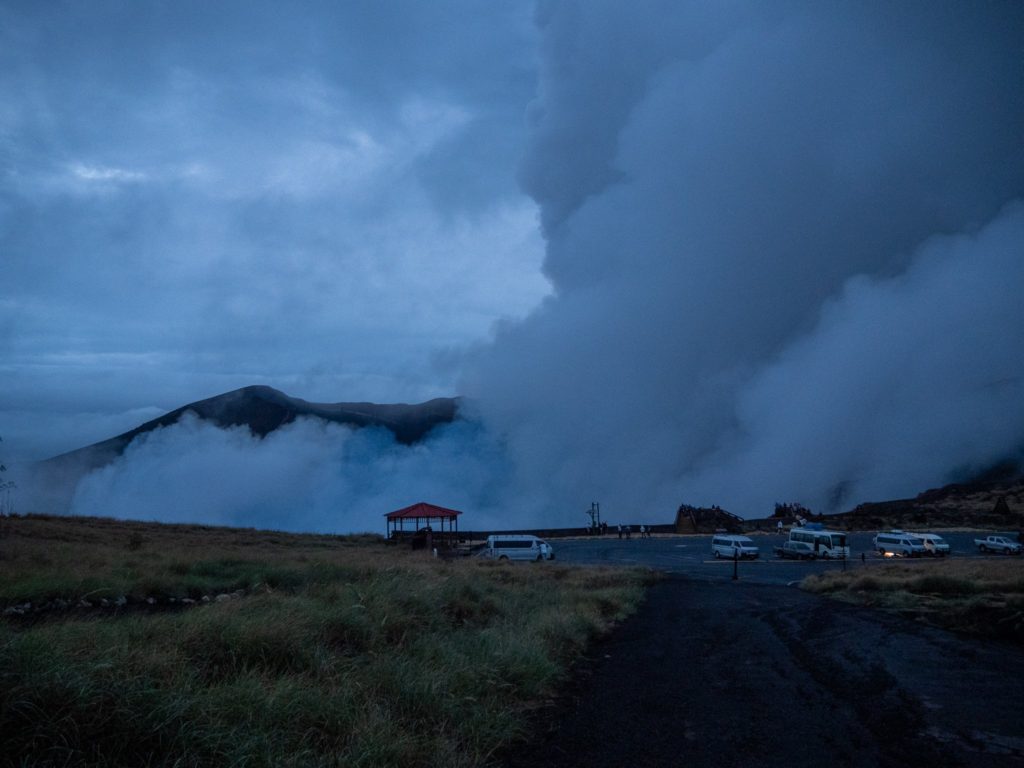
The best tours to Masaya Volcano National Park
One of the best ways to see Masaya National Park is to take a tour. Not only will you learn so much from a knowledgeable local guide, but your transport is included too. There are multiple ways to visit Masaya – you can visit the park during the day or at night and you can also combine your visit with other must-see sites in Nicaragua. Here are a few we’d recommend:
From Managua or Granada:
From Masaya or Managua:
Masaya with Granada City and Lake Nicaragua:
Masaya with local villages and artisanal markets:
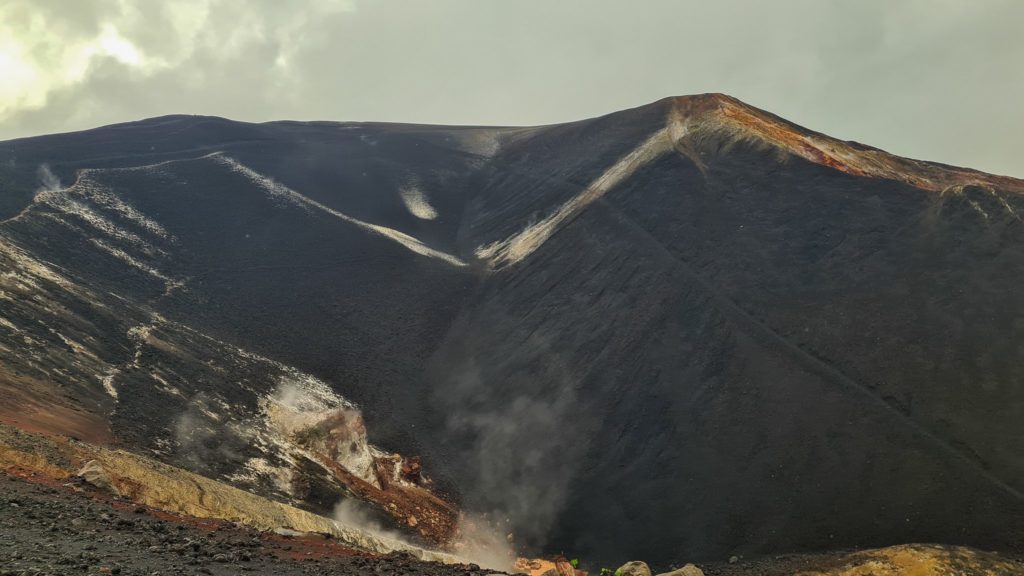
FAQs
How many active volcanoes are there in Nicaragua?
There are 19 active volcanoes in Nicaragua, most of which form a chain inside an area between two faults called the Nicaraguan Depression Graben. Of these volcanoes, Masaya is the most active with 19 recorded eruptions.
Where is Masaya Volcano?
The Masaya Volcano is located right beside the visitors’ car park at Masaya Volcano National Park. The park is approximately 8.5 miles (14 km) west of Granada and 19 miles (31 km) southeast of Managua.
How long is the tour of Volcán Masaya, Nicaragua?
This depends on which tour you book. Some tours last all day and visit other sites near Masaya while others only visit the lava crater. Due to restrictions on the number of tourists within the park, the time you spend at the crater on a night tour is typically 30 minutes to an hour. By contrast, you can spend several hours in the park during the day. Do both if you have the time!
How often does the Masaya volcano erupt?
For the past 3 decades, Volcán Masaya has erupted just under once every 3 years!
Can you visit Masaya National Park from Costa Rica?
Yes! While it’s a long day, it’s totally possible to visit Masaya National Park from Costa Rica. Check out this full-day guided tour which includes your transport, border crossing, Granada, Catarina Volcano, Lake Nicaragua, Monkey Island, Nicaraguan Artisanal Markets and Masaya Volcano.
How much do you tip guides in Nicaragua?
In general, you should tip your Nicaraguan tour guide 10%+ of your tour value. If you have a bit extra to spare and the guide provided an excellent service, then 15%-20% would be gratefully accepted. Local currency is always best but American Dollars are also widely used throughout Central America.

Read next:
Everything you need to know about visiting Hawai’i Volcanoes National Park
The Thorough Guide to Antigua, Guatemala
Copán Mayan Archaeological Site + The Best Things to do in Copán Ruinas, Honduras
Road-tripping Costa Rica in a 4×4 Camper Car with Nomad America
